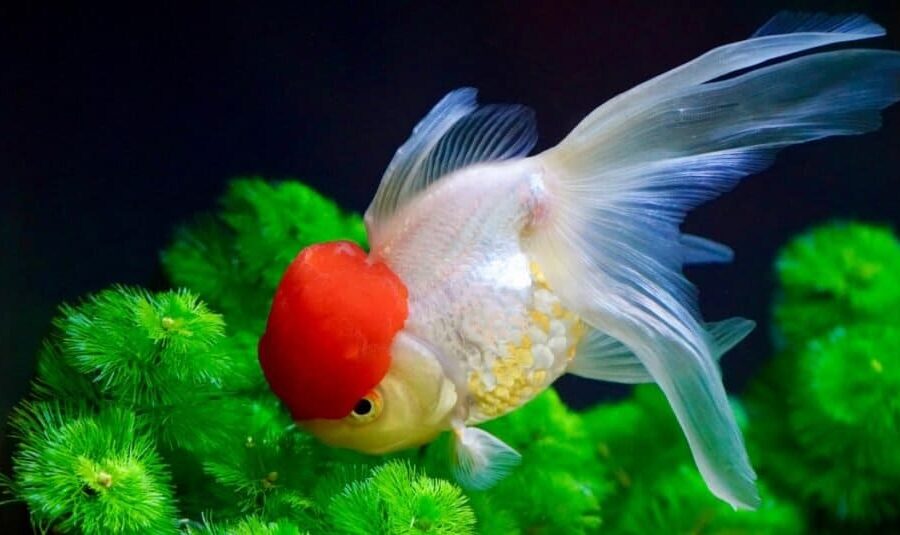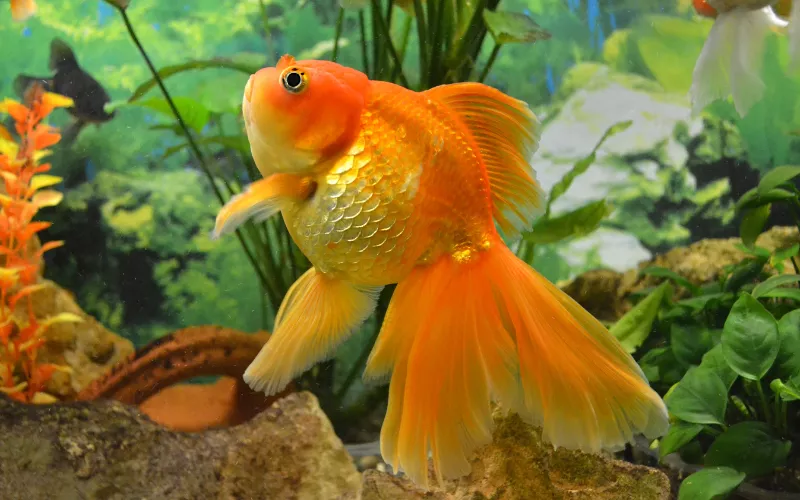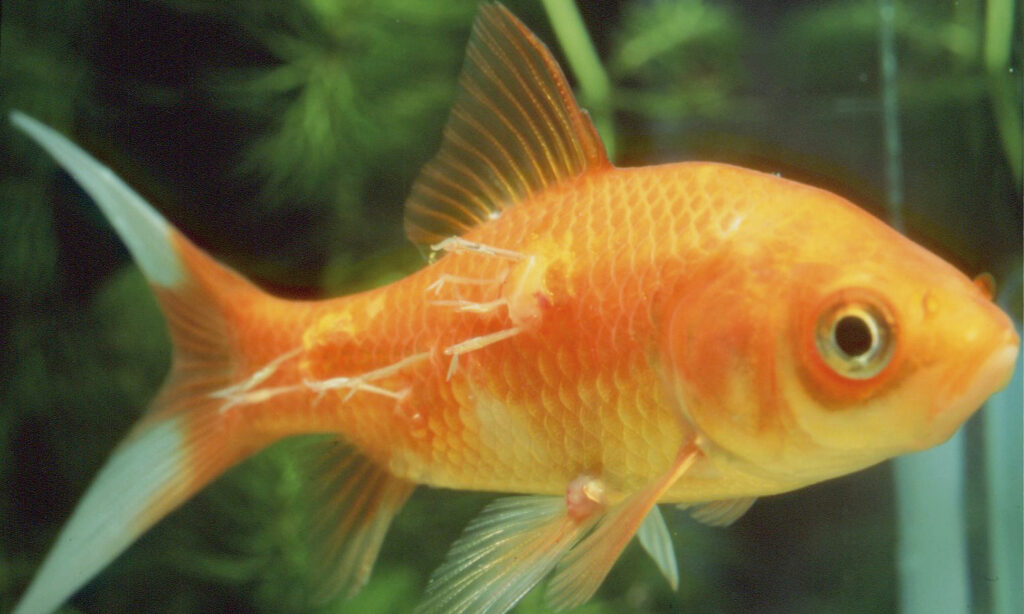
Let’s dive in and talk about a pesky creature turned aquatic party crasher – Fish Lice (Argulus). This tiny parasite, as innocent as its name sounds, is one dreaded villain for our goldfish friends. If you are a goldfish owner, understanding this problem is the first step to a healthier, lice-free life for your aquatic pet.
Swimming further, we’ll discover how to identify these microscopic nemeses on your goldfish and what they can do to your fish’s health. But don’t worry, we won’t stop there. We’ll float through effective prevention tactics and necessary treatments if your fishy pal is already dealing with the problem. Get ready to sail through, and face this issue fins on!
Understanding Fish Lice (Argulus)
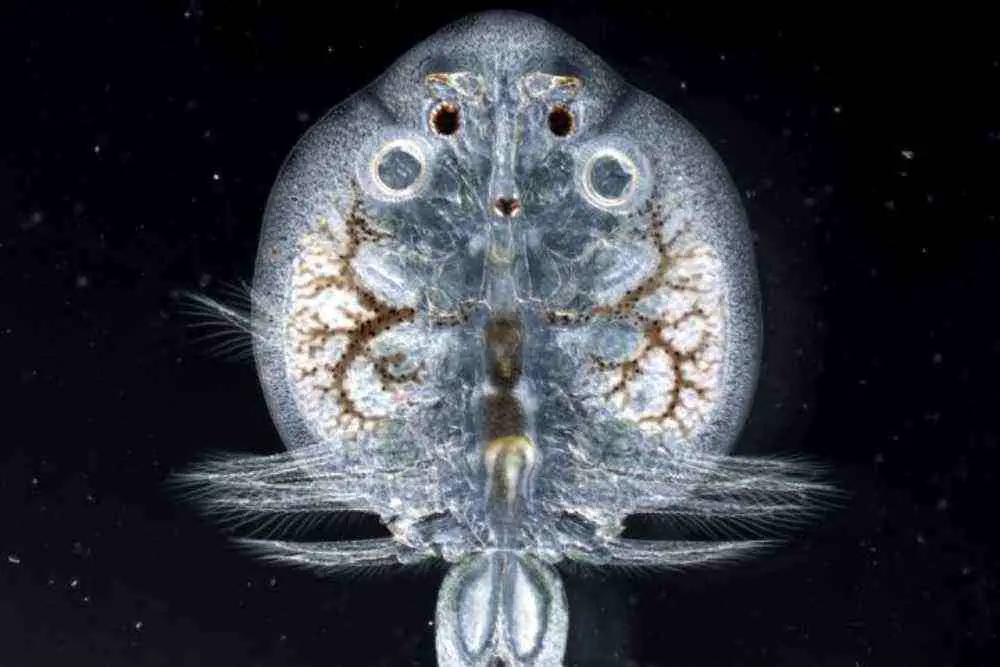
Next time your goldfish gives you that gleefully blank stare, you might want to look a little deeper. Let’s talk about a pesky nemesis hiding in the shadows. No, not your cat, I’m afraid we’ve got a bigger fish to fry!
What is Fish Lice (Argulus)?
Question time! So, what exactly is Fish Lice (Argulus)? Well, Argulus, commonly tagged as “fish lice,” are crustaceans. But these aren’t the charming ones you’d smear butter on at a fancy seafood joint. They’re parasites that love attaching to the skin of fish (including our beloved goldfish!).
Fish lice are like the unsolicited advice from Aunt Mildred at family gatherings – completely unwanted and irritating as hell. They feed on the blood and tissue of our friendly, innocent goldies. Sounds grim, right? But the more we know, the better we fight, right? So, let’s dive deeper.
Why it’s a Problem for Goldfish?
Now, why should we bother? Yeah, fish lice might sound harmful (and somewhat gross), but what’s the big deal? Well, fish lice cause severe irritation and stress in your goldfish, which is no laughing matter. When affected, your fish pal might go “loco,” acting erratically and rubbing its body against stuff.
Just like itchy skin drives us bonkers, fish lice create the same havoc for goldfish. Isn’t it hard enough swimming in a glass bowl all day without extra drama? By knowing what we’re up against, we can keep our finny friends happy and healthy!
Now, clap on your detective hat and dust off your magnifying glass. It’s time to talk symptoms and how to identify fish lice on your goldfish. Let’s swim to the next section, shall we?
Identifying Fish Lice on Your Goldfish
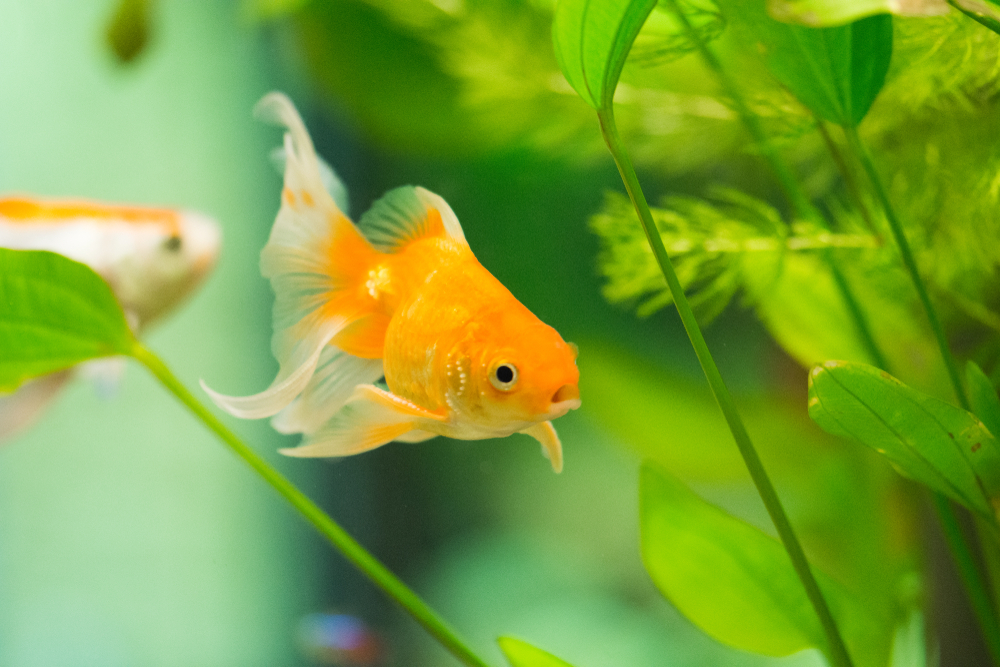
“Just keep swimming” might work for Nemo, but it doesn’t cut it when your goldfish has decided to play host to a horde of parasitic party crashers. Don’t despair. Identifying these unwanted guests, dispatching them, and restoring your gilly buddy to good health is possible. The first steps? Spotting the signs and knowing what to expect.
Signs and Symptoms of Fish Lice
Hold onto your fish nets – let’s dive into the nitty-gritty of fish lice symptoms. While fish lice may sound like they belong in a bad fishy horror story, they’re very real (even if they aren’t technically lice). If your goldfish were on social media, these would be the equivalent of bad vacation photos.
- Identity Crisis: First, remember that fish lice aren’t actually lice. They prefer their fancier title: Argulus. But we’ll stick with “fish lice” because it’s catchy.
- Spot the Culprit: These pests resemble tiny, dark, disk-shaped critters lazily lounging on your goldfish’s scales. Think of them as uninvited guests who’ve overstayed their welcome.
- The Dance Moves: Goldfish infected with fish lice have some odd behavior. If your goldfish looks like it’s trying out for “Dancing with the Fish” by rubbing against tank decor, it’s not rehearsing – it’s itching.
- Red Alert: As these little invaders start their feast, they leave behind red marks. It’s their way of saying, “We were here.”
- Open Sores: Persistent scratching can lead to wounds. This is where things get serious. Those open sores become gateways for secondary infections.
- Loss of Luster: An infected goldfish might lose its vibrant sheen. It’s like having a bad hair day but for fish.
- Erratic Swimming: Your goldfish may swim erratically, like it’s forgotten its usual graceful glide.
- Increased Gilling: If the lice attach near the gills, you might observe a faster gill movement.
So, if you spot any of these symptoms, it’s time for some sleuthing. And more importantly, some immediate action. Remember, a healthy tank is a happy tank!
How They Affect Your Goldfish’s Health
Now let’s talk about the larger picture, or as I like to call it, “What happens when fish lice play houseguest.” The Argulus Itch not only brings discomfort to your beloved pet, but also stress. And in the aquatic world, stress leads to a lowered immune system, making Mr. Goldie even more susceptible to diseases. It’s a fish-eats-fish world out there, and a compromised immune system might just be handing out “help yourself” signs to a whole range of uninvited aquatic nasties.
Long story short, fish lice aren’t just cheeseburger-shaped annoyances, they’re potentially life-threatening parasites. If your fishy tenant is playing host to these sea squatters, it’s high time you stepped in and did something about it.
Braced for the fight against fish lice? Fantastic! Hold onto your nets, folks. Up next, we’re delving deep into the best ways to prevent these aquatic aggravations. From cleaning practices to dinnertime dos and don’ts, we’ve got all the tips you need to keep your gilled good buddy, fish lice-free. Hold tight, help is on the way!
Preventing Fish Lice Infestations

By now, you’re wrangling for answers on how to shield your glorious goldfish from these aggravating arthropods. Fear not, our finned friends! It’s prevention time. Let’s unravel a few strategies, from cleaning acts to feeding facts, and ‘how-to mingle’ tips with the aquatic neighbourhood.
Best Cleaning Practices for Your Aquarium
The secret to a lice-free aquarium? Impeccable cleanliness. It’s like sending those pesky fish lice an eviction notice – and trust me, they won’t be returning any time soon.
Think of your aquarium as Earth’s doppelganger – a mini world. Our planet thrives with a bit of TLC, and so does your fish tank. Regularly changing the water isn’t just a good-to-do, it’s non-negotiable. Here’s a fun tidbit: fish lice detest pristine waters, so keeping things sparkling is your first line of defense.
Here’s a nifty guideline:
- Weekly Water Change: Roll up those sleeves and change about 25-30% of the aquarium water every week. Freshen up the environment and make it a no-go zone for Argulus.
- Gravel Vacuum to the Rescue: Imagine if you had a magic wand to shoo away all the evils in your tank. Well, the gravel vacuum is it! It doesn’t transform fish lice into pumpkins, but it does a splendid job of banishing impurities.
- Scrub-a-dub Equipment & Decor: Keep your fish’s kingdom gleaming. Clean the equipment and decor with hot water or a fish-safe cleaner. Want to up the ante? Dry them in direct sunlight. For fish lice, it’s akin to the vampire’s relationship with sunlight – utterly lethal.
For those keen on becoming a fish tank maestro, here’s a treat: The Complete Guide to Aquarium Maintenance. Dive in for a deeper understanding of keeping your underwater realm in top shape.
And while we’re talking top-notch care, let’s swim over to dining etiquettes for our golden aquatic wonders.
Proper Feeding Habits for Your Goldfish
Goldfish might not be gourmets, but they sure have distinct tastes. A balanced diet is essential for their health and vitality.
Your primary feeding choice should be high-quality flakes or pellets, tailored to meet the nutritional needs of goldfish. Want to give them a delightful treat now and then? Introduce boiled vegetables into their diet. The sight of a goldfish relishing a pea is not just nutritious, it’s reel-y cute!
However, moderation is crucial. Overfeeding is a common mistake among fish owners. Not only does the leftover food pollute the water, but deteriorating water quality also paves the way for pests, like fish lice. Aim for two to three minutes of feeding time to ensure they consume most of the food.
For those of you keen on diving deeper into goldfish nutrition, here’s a guide on the 5 Best Diet Foods for Your Goldfish. Additionally, if you’re worried about overfeeding and its repercussions, our article on Strategies to Prevent Overfeeding Your Goldfish will be invaluable. After all, a well-fed goldfish is a happy goldfish!
Safe Co-Habitation with Other Fish Species
Buying a new fish is exciting, but remember, it’s like bringing a stranger home.
Quarantine new fish for at least two weeks. Check for signs of fish lice or other parasites. This simple step can save your goldfish from crashing into a war zone.
But, hey, goldfish are socialites! They love company, but choose their friends wisely. Some species are more prone to argulus. Research before you introduce new species into your aquatic haven.
Ready for the next leap? Up next, we’re diving deep into treatment strategies against these little lice libertines. So, on your marks, get set, swim!
Treating a Fish Lice Infestation

You might be thinking, “Great! My goldfish are serving as a luxury cruise for lice. Now what?” Don’t panic, lovely goldfish enthusiasts, there’s hope.
Professional Treatments vs DIY Solutions
When it comes to the battle against fish lice, DIY solutions like Melafix can serve as your first line of defense. Think of Melafix as your plucky sergeant, leading the charge with its natural tea tree extract. It’s a simple measure that could turn the tide, helping your scaly comrades regain their health.
Yet, as with any battle, it’s essential to know when to call in reinforcements. While DIY treatments such as Melafix and aquarium salt baths can help manage minor outbreaks, they are akin to band-aids on a bullet wound when dealing with a full-blown infestation.
In these cases, professional treatments are your heavy artillery. They have been tried, tested, and proven effective in the field, offering a reliable way to exterminate fish lice. So, while your adventurer spirit might be inclined to DIY everything, remember that sometimes, it’s okay to say, “I need a hero!”
As your fish’s guardian, the choice between DIY treatments and professional ones lies in your hands. Arm yourself with knowledge, assess the situation, and make the call. The war against fish lice is winnable. Prepare your battle plan, and let’s dive into the deep end.
The Role of Aquatic Veterinarians
Equipped with specialized training and license to chill, aquatic veterinarians are our superheroes. They possess the keen ability to spot parasites, diagnose them effectively, and decide on optimal treatment plans — a trifecta of fish-saving prowess. Promoting their expertise isn’t just fishy flattery; it’s about helping your goldfish navigate the treacherous waters to recovery.
Fasten your seatbelts, people. We’re about to plunge into the aftermath of a successful fish-treatment operation. Bring towels.
Alright, you’ve swum through the murky waters and emerged with knowledge and flair! Yet, just like any epic saga, the story doesn’t end once the villain is defeated. Ready to dive into the next section? Up next: ensuring our goldfishy heroes thrive in a world post-battle. Onward to Post-Treatment Care and Recovery! Dive in, and let’s keep those waters crystal clear!
Post-Treatment Care and Recovery
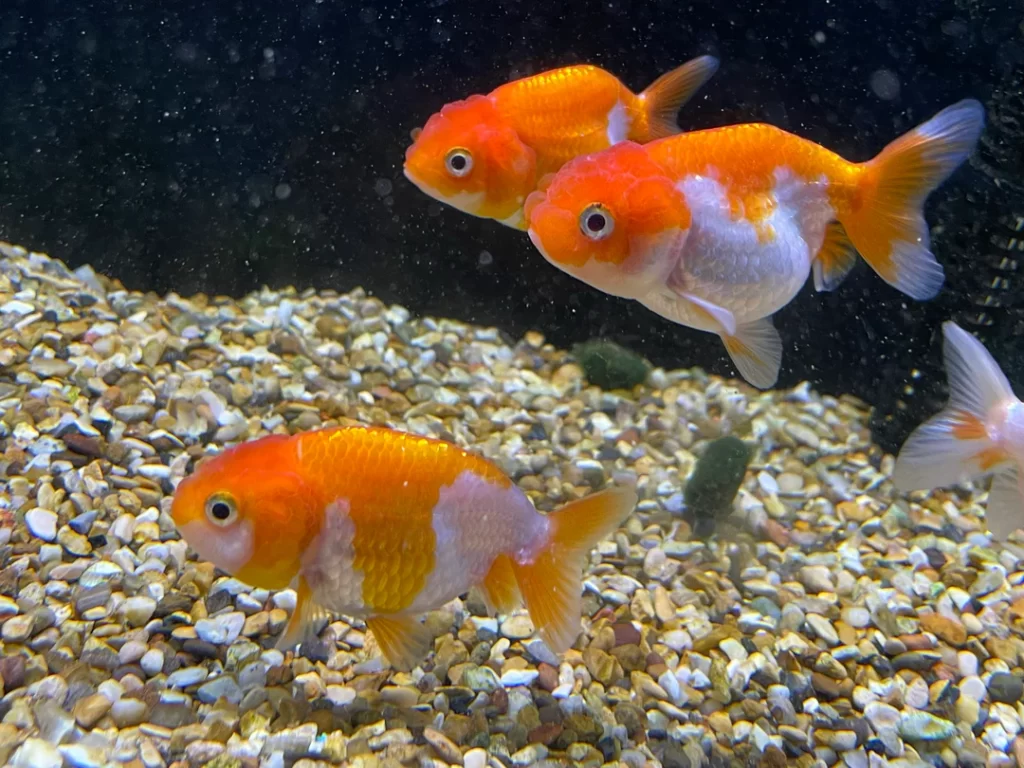
You’ve tackled the tiny terror known as fish lice, a task many might call “mission impossible”! But while Tom Cruise might walk off the set after his action scene, you’ve got some sequel-level duties to keep your shimmering companion in Oscar-winning shape.
Ensuring Full Recovery of Your Goldfish
Imagine sending a recovering opera singer straight to a high-note battle without ample vocal rest. It’d be a disaster, right? Similarly, don’t expect your goldfish to sing its aquatic aria immediately after treatment.
- Rest and Observation: Keep your goldfish in a stress-free environment. Dim the lights a bit, keep loud noises away, and no sudden movements near the tank. Observe the way it swims. If it’s still scratching against rocks or decorations or swimming erratically, it might need more time to heal.
- Balanced Diet: Ensure it receives a balanced diet. High-quality pellets or flakes, along with occasional treats like brine shrimp or bloodworms, will keep its immune system robust.
Preventing Recurrence of Fish Lice Infestations
There’s nothing worse than a rerun of a horror show, especially if the star villain is the fish lice.
- Quarantine New Fish: Any new fish should go through a quarantine process in a separate tank. A two to three-week isolation will give you ample time to observe them for any sign of pests or illness before introducing them to the main tank.
- Regular Tank Maintenance: Keep the substrate clean, change about 10-15% of the tank water weekly, and ensure filters are running efficiently. A cleaner tank is a less hospitable environment for parasites.
Monitoring and Regular Health Checkups
It’s like your goldfish’s very own annual spa retreat, minus the face masks and cucumber slices.
- Monthly Check-ins: Dedicate one day a month to thoroughly inspect your goldfish for any anomalies: spots, strange behaviors, or physical changes.
- Equipment Checks: Ensure heaters, filters, and other equipment function correctly. Sometimes, stressed fish due to faulty equipment can be more susceptible to illnesses.
- Water Quality Tests: Regularly test the water for ammonia, nitrites, nitrates, and pH levels. Any imbalance can stress your goldfish and reduce its immunity, making it easier for pests to take hold.
Alright, with your goldfish now in prime Hollywood shape, let’s take a journey through the experiences of other goldfish aficionados. Trust me, their tales are more gripping than a summer blockbuster!
Accounts from Goldfish Owners and Aquarists
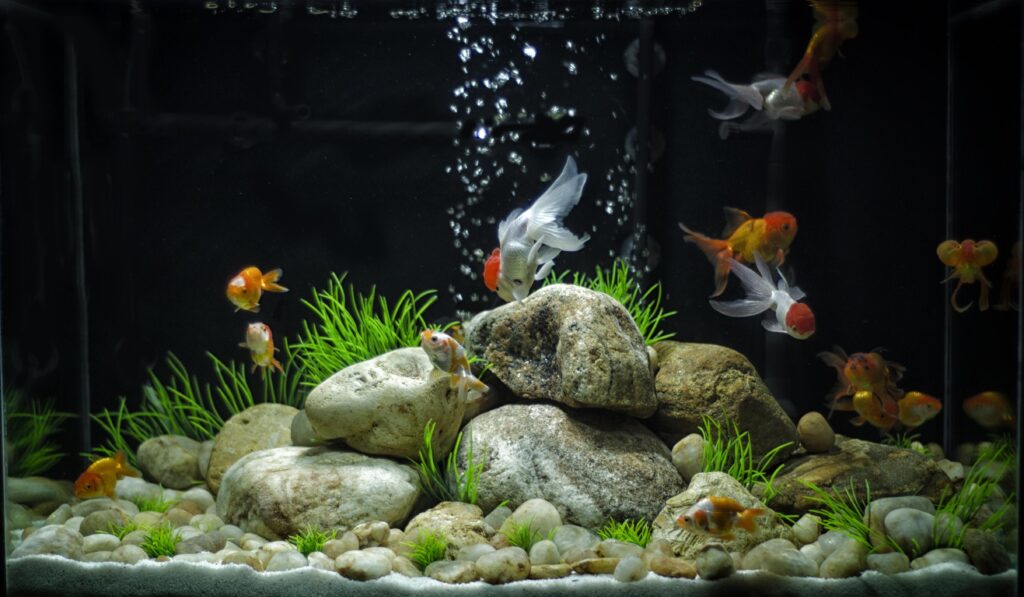
If you thought your goldfish drama was exclusive to you, think again! Fish tales might typically be about “the one that got away,” but we’ve got some fishy stories that’ll have you hooked, line, and sinker.
Personal Experiences with Fish Lice Disease
Meet Linda. She once described her tank as “a five-star goldfish resort” until it unintentionally turned into a lice-infested motel. She first noticed something was amiss when her prized goldfish, Sir Bubbles, started acting like he’d been attending too many late-night fish raves.
Then there’s Greg, a goldfish enthusiast who, upon discovering lice in his aquarium, described his reaction as “more shocked than a catfish at a disco.”
Challenges Faced and Overcome
Both Linda and Greg faced the ultimate fish keeper’s challenge: evicting the unwelcome lice guests without harming the fishy hosts. Linda tried playing classical music to soothe her fish during treatments. (No confirmation on whether Bach or Beethoven works best for lice removal). Greg, on the other hand, went the detective route, keeping a journal of every slight change in the tank’s environment, which he humorously titled “Lice & Me: A Love-Hate Diary.”
Outcomes and Lessons Learned
So, how did it all pan out? Linda’s melodious method did wonders in keeping her goldfish calm, and while the lice weren’t fans of classical tunes, they were certainly not fans of the treatments either. Her tank returned to its five-star status, albeit with a new “no lice allowed” policy.
Greg’s diary, which started as a mere tracking tool, ended up becoming a hit in his local fish-keeping club. It taught many about the importance of keen observation and, perhaps unintentionally, provided a few chuckles.
In the end, both Linda and Greg learned that with a dash of creativity, a pinch of patience, and a sprinkle of humor, the journey of treating fish lice can become an adventure of its own.
And speaking of adventures, let’s leap back into the depths of understanding these little pests, and, more importantly, how to keep our finned friends flaunting their scales in style!
Wrap Up
In conclusion, the menace of Fish Lice cannot be underestimated. Understanding their nature and impact is necessary for every goldfish owner. It’s equally crucial to accurately identify these parasites through their known signs and symptoms. Their detrimental effects extend beyond the physical, impacting the mental health and overall wellbeing of your goldfish.
Prevention always trumps cure, thus requiring diligent cleaning practices and appropriate feeding habits. Creating a harmonious aquatic environment also acts as a deterrent to infestations. However, if battling with a Fish Lice infestation, explore professional treatments and DIY solutions. Remember, the role of aquatic veterinarians is invaluable and aftercare is crucial in complete recovery.
Frequently Asked Questions (FAQ)
Question: What exactly is fish lice (Argulus)?
Answer: Argulus, commonly known as fish lice, is a parasitic crustacean that affects various fish species, including goldfish. They can cause significant health issues in fish, leading to loss of scales, decreased appetite and even, death.
Question: How can I identify a fish lice infestation on my goldfish?
Answer: Key signs of lice infestation include behavioral changes like erratic swimming, rubbing against objects, loss of appetite, inflammation, and visible lice on the skin of your Goldfish.
Question: Can I prevent fish lice infestation?
Answer: Yes, through a combination of regular tank cleaning, proper feeding, and practicing safe co-habitation with other fish, you can significantly reduce the risk of a lice infestation.
Question: Do I need a professional to treat a fish lice infestation?
Answer: Severity of the situation often determines this. In mild cases, over-the-counter solutions might suffice. In severe cases, you may need the help of an Aquatic Veterinarian.
Question: How do I ensure my goldfish recovers fully after treatment?
Answer: Post-treatment care is crucial. This includes monitoring the health of your fish, maintaining water quality, and continuing with preventive measures to avoid a re-infestation.

